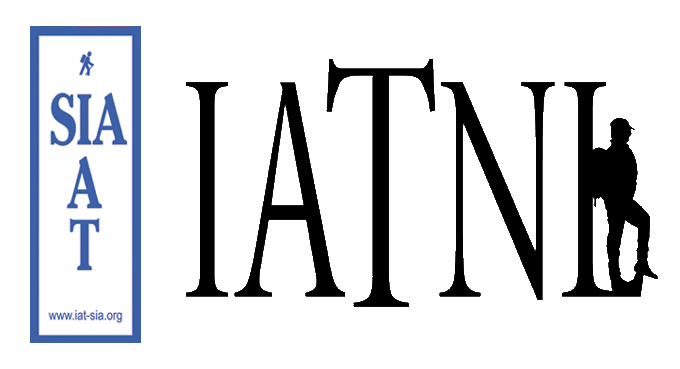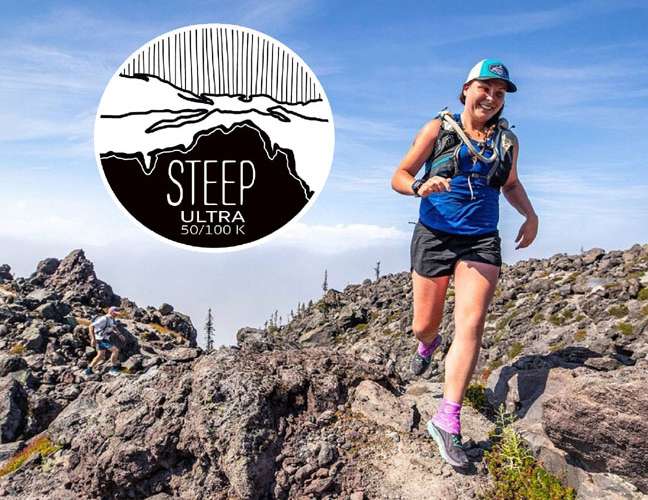The Annual General Meeting of the International Appalachian Trail (IAT) was held on Saturday, June 16 in Reykjavik, Iceland. Since the establishment of chapters in Greenland and Scotland in the spring of 2010, this was the first combined meeting of representatives from Europe and North America. The European contingent included participants from the host chapter of Iceland, as well as from Norway, Denmark, the Faröes, England, Scotland and Ireland. The North American group included participants from Newfoundland, New Brunswick and Maine. The Spainish and Quebec Chapters shared reports in advance of the meeting.

Iceland Touring Association Headquarters
At the Meeting
Ferdefélag Íslands – the Iceland Touring Association (ITA – http://www.fi.is/en/home/) hosted the meeting at their headquarters in Reykjavik. Following a welcome and introduction by IAT Chair Paul Wylezol of the Newfoundland Labrador Chapter, the ITA’s Leifur Thorsteinsson introduced his organization and its effort to identify an IAT route in Iceland. The ITA has 7,000 members for whom it provides programs and organized hikes throughout the year. The ITA manages 15 huts throughout Iceland, and Leifur reported that they had selected a spectacular route for the IAT from Hvitarnes to Hveravellir along a centuries old horse and footpath from the south to the north of the island. The route can be covered in 4 days, with stops in three of the organization’s huts.

Special guest, David Startzell, the recently retired Executive Director of the Appalachian Trail Conservancy (ATC – http://www.appalachiantrail.org/) then addressed the group. Dave reviewed the history of the establishment of the Appalachian Trail, which extends from Springer Mountain, Georgia to Katahdin in Maine, with special attention to Benton MacKaye, who first described his vision for the trail in 1921, and Myron Avery, the tireless organizer who oversaw the completion of the trail in 1937. Dave paid special attention to the level of both physical effort and financial resources needed to maintain and sustain the AT, and he talked especially about the need for a strong educational program at the ATC. Dave encouraged the assembled group to continue to make improvements to the IAT trail network as well as the human network required to sustain it.

Dave Startzell,Retired Executive Director of the Appalachian Trail Conservancy
Maine Chapter President Don Hudson next provided a brief history of the IAT through three phases of its development. The project was launched in 1994 to connect the tallest mountains in Maine, New Brunswick and southern Quebec. The second phase of the project began in 2002 when a chapter was created to bring the IAT to the island of Newfoundland. Nova Scotia (2008) and Prince Edward Island (2009 came on board to complete the trail in North America. Don reminded those in attendance that the third major phase of the project was establishing the IAT network across the North Atlantic islands to Europe – and, eventually, to North Africa. Don wrapped up his remarks with a short video presentation of the first six years of the IAT.

IAT Geologists Walter Anderson from Maine and Hugh Barron from Scotland reviewed the origins of the Appalachian/Caledonian Mountains and the subsequent opening of the Atlantic Ocean, which provide the rationale for extending the IAT to Europe and North Africa. The geologic framework provides guidance and direction to chapters to identify the trail network across the full extent of this ancient landscape surrounding the North Atlantic Basin. Cheryl Marvinney, a geologist and high school teacher from Maine, concluded the presentation with examples of her use of the IAT to reinforce her students’ comprehension of complex geologic processes.
 IAT North America Geologist Walter Anderson
IAT North America Geologist Walter Anderson

Cheryl Marvinney, Geologist
The individual chapters next reported on the high points of their efforts since the last AGM in Quebec. The Maine Chapter presented its first Topo Guide, modeled on guidebooks from France and Quebec, and which will be published later in July. New Brunswick has updated its map of the trail and continues to develop the team needed in the province to maintain the IAT. Newfoundland adds new sections of trail annually, and Paul made special note of the IATNL – Parks Canada first annual Art & Adventure Festival held in Gros Morne National Park, including the IAT Overfalls Trail.
Magne Haugseng of Coast Alive, and Vice Chair of IAT Europe, provided an overview of the IAT along the North Sea Trails of in Norway, Sweden, Denmark, the Netherlands, and England. Chapter representatives from Norway, Denmark, and England highlighted significant sections of the trail in their jurisdictions. In southwestern Norway, Hans Christian Lund and Siv Hemksett explained that the IAT traces the path that young children were once forced to take to find work during the summer months. In Denmark, Karen Greve noted that the trail is linked with a significant effort to improve health and wellness by encouraging active use of hiking and biking paths. The sport of geocaching is encouraged in Norway and Sweden and throughout the region as a means of motivating young people especially to spend time outdoors. The Faröe Islands present spectacular landscapes that are often shrouded in fog. Jay Marrison oversees the Coast Alive and IAT route through North Moors National Park on the northeast coast of England, and he emphasized the efficient use of volunteers to maintain trails. The success of Jay’s program was of great interest to everyone in attendance.

IAT Europe Vice Chair Magne Haugseng
After Coast Alive’s North Sea Trails, IAT Faröes coordinator Liz Mortensen discussed the challenges of establishing trails for non-locals in the Faröe Islands, as the trail weaves along boggy moors and dangerous sea cliffs often enshrouded in fog. She explained how the use of guides from nearby villages could help support the local economy, as well as insure safe passage for hikers through difficult terrain.
Scotland’s Hugh Barron reported that they had linked three existing trails from the southwest to the northeast coast to complete the IAT in Scotland. The IAT begins at Mull of Galloway with the Firth of Clyde Rotary Trail, itself comprising three existing trails – the Mull of Galloway Trail, the Ayrshire Coastal Path, and the Clyde Coastal Path. This combined trail leads to Milngavie and Glasgow and the start of the West Highland Way. The WHW leads to Fort William at the foot of Ben Nevis, where the trackless Cape Wrath Trail brings hikers to the northern terminus of the IAT in Scotland – Cape Wrath.

IAT Europe Hugh Barron
The route of the IAT in Ireland runs from the Slieve League sea cliffs through Donegal to the border with Northern Ireland. IAT Ireland coordinator, Inga Boch, presented the map of the route, noting that the eastern end of the trail in Ireland was laid out to connect – eventually – with the Ulster Way in Northern Ireland (http://www.irishtrails.ie/Trail_News/International_Appalachian_Trail_-_Ireland/). Filmmaker Mark Flagler debuted a 5-minute video of the route in Ireland that will soon be available on the Internet. Inga concluded with an invitation to join her on a hike of the route sometime in the coming year.
 Filmmaker Mark Flager and IAT Rep Inga Boch, Ireland
Filmmaker Mark Flager and IAT Rep Inga Boch, Ireland
In addition to a review of the important work that chapters will undertake in the coming months and years, both on trail standards and chapter to chapter linkages, Paul emphasized the importance of marketing and public relations to the success of the project. Maps, guidebooks and websites will be the principle tools of the trade, however online media and print publications present good opportunities, and are exciting additions to the toolbox. Paul then invited publisher and gallery owner Ralph Brill of New York City and North Adams, Massachusetts to present his vision for an illustrated, large format book about the trail, called The Pangaea Project. In addition to the book, Ralph has envisioned a companion website that can be routinely updated to bring the natural and cultural resources of the trail network to the fingertips of the user.

Paul then expressed hope that gaming software developers will create games and apps that connect youth to both their electronic devices and our natural landscapes. The opportunities provided by combining geo-caching with gps and cell phone technology could help encourage youth to get off their behinds and onto their feet.
To conclude the presentations, writer Robert Moor shared his story and images from a recent trip to Morocco to illustrate what may one day become the southeastern terminus of the IAT near Taroudant in the High Atlas Mountains. Though no formal trail work has commenced there, Robert offered some hope that a group may yet come together to extend the IAT to Africa.
At the conclusion of the meeting, the officers elected to three-year terms at the AGM in Quebec were reconfirmed for 2012/2013: Paul Wylezol, Chair; Eric Chouinard, Vice-Chair North America; and Magne Haugseng, Vice-Chair Europe. Walter Anderson and Hugh Barron were reappointed IAT Geologists for North America and Europe respectively, and Caroline Swan of the IAT Newfoundland Labrador was appointed Recording Secretary. Hugh offered to host the 2013 AGM in Scotland, for which there was unanimous support and agreement.
The full day agenda concluded with refreshments and dinner at the Hilton Hotel, and heart felt thanks to the Iceland Touring Association for their hosting the first IAT AGM outside North America, well-attended by both North American and European participants.




